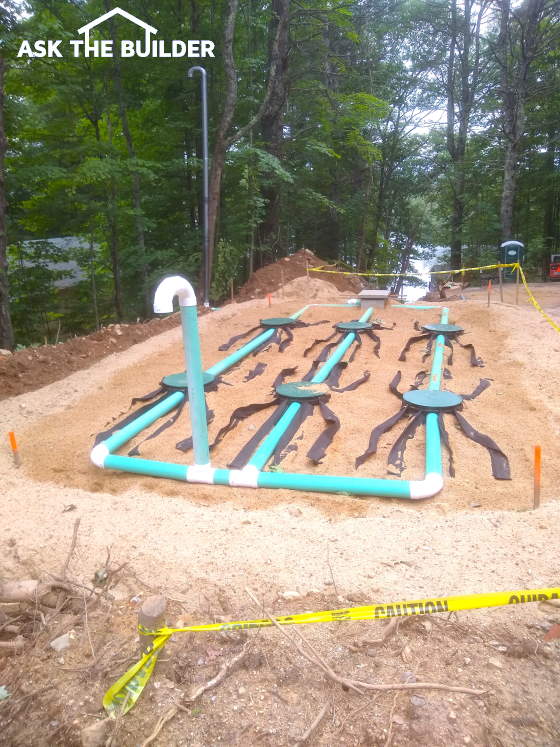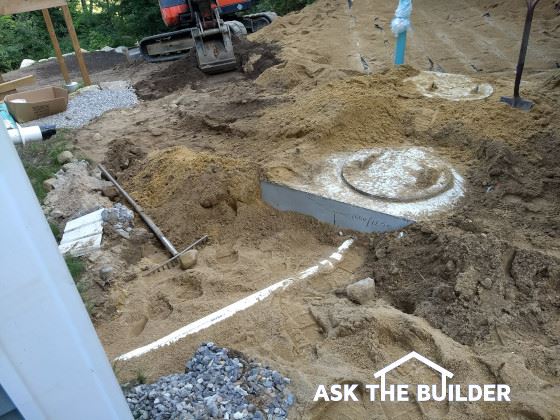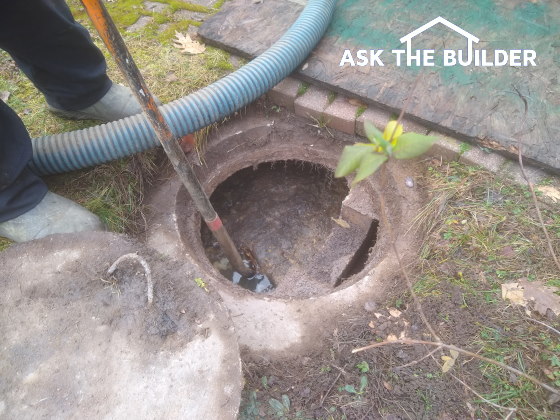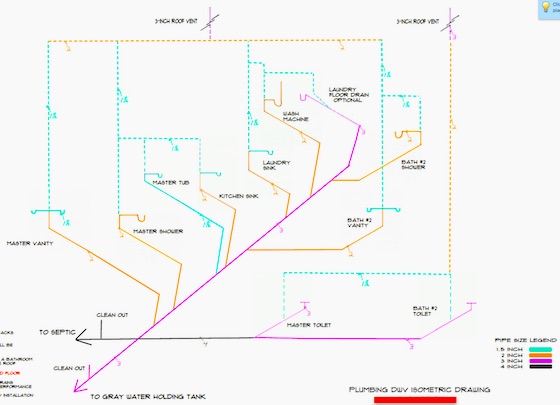Septic System Design and Pumping – Easy!

Septic System Design and Pumping | This is the leach field for a septic system. Septic designers have all sorts of options and can make a septic system work on just about any lot. Copyright 2021 Tim Carter
Septic System Design and Pumping - Simplicity
Do you wonder how septic systems work? I never gave it much thought in all the years I lived in Cincinnati, Ohio. Every house I lived in was connected to a municipal sewer line. Just about every house I built I connected to a sewer line. There were a few houses I built that did have septic systems.
Air & Oxygen Break Down Sewage
One, in particular, was very unique. The lot wasn’t big enough to support a traditional leach field. I’ll share what a leach field does in a moment. In essence, the system was a miniature sewage treatment plant! There was a propeller on a shaft that extend down into the septic tank. It was attached to a motor that was protected from the weather. For ten minutes an hour, this motor would spin working much like the blender in your kitchen. The only difference is when the propeller spun around, fresh air from outdoors was also injected into the swirling mass of water and waste inside the septic tank.
Visit a medium or large-sized sewage treatment plant and that’s what you’ll discover. Before they send the sewage back into the closest river, they aerate the wastewater. Introducing oxygen to sewage is a fantastic way to get rid of all the harmful things that one might find in wastewater.
How Septic Systems Work
If you’re a city dweller as I was for five decades, here’s how septic systems work for the most part. When you flush your toilet or water drains from a tub, shower, vanity, or kitchen sink, the wastewater flows through a 4-inch pipe that connects to a large precast concrete tank. The capacity of the tank can range from 500 to 1,000-gallons or more. They’re sized by septic designers based on the amount of projected waste that might be created within the house each day. Typically the designer goes by the number of bedrooms in the house.
Some tanks have different partial suspended walls and baffles within the tank. These baffles isolate grease and other floating debris trying to ensure it doesn't make it to the leach field.
Can a Septic Tank be Installed Backwards?
One of the biggest issues with septic tank installation is installing the tank BACKWARDS! It happens. A plumber might put the inlet pipe where the outlet pipe is supposed to be. You can get a diagram from the company that builds the precast concrete tanks. You can see clearly what's the inlet and what's the outlet opening.
Body Waste Contains Bacteria
The waste from your body, foodstuffs, and oils from your skin all contain bacteria. This bacteria starts to work in the tank to break down the waste. At the other end of the tank opposite the inlet pipe is an outlet pipe. For each gallon of water that enters the septic tank, a gallon of water flows out of it. This partially treated water that leaves the tank has lots of microscopic bacteria and pathogens in it.

You simply can't believe how nasty the liquid is inside a septic tank. Countless bacteria and pathogens. This is a septic tank about to be pumped. It’s a best practice to do this every two or three years. Copyright 2021 Tim Carter
Where Does the Liquid Go?
It flows from the tank, or is pumped up a hill, to the leach field. The wastewater enters a maze of pipes that have perforations in them. The pipes typically are set upon a thick layer of washed sand. The wastewater is distributed into multiple pipes where it then slowly enters the sand.
There’s lots of oxygen in the sand and other organisms. These work in tandem to purify the wastewater that drips out of the leach field pipes. It’s a simplistic system that’s time-tested and best of all it works very well if you watch what you put in your septic tank.
Watch What you Put Into Septic Tanks
Years ago when I lived in Cincinnati, I would put anything I could down my drainpipes. Heck, as long as it made it out to the sewer line, foolishly I felt it wasn’t my problem. That was a bad attitude and municipal sewer plant operators wish more people would care. For example, I’d clean my paintbrushes in a sink thinking nothing of it. I’d emulsify grease from kitchen pots and pans and it no doubt congealed farther down in the sewer.
Only Put Body Waste in a Septic Tank
You never ever want to put any of these things, chlorine bleach, or any chemicals into a septic tank. The only thing that should go into the tank is waste from your body and toilet paper. The cheaper the toilet paper the better. Never ever put flushable wipes in a septic tank or a city sewer system. Why? Watch my Flushable Wipes video!
Pipe Gray Water to the Ground
If you plan to build in a rural area where a septic tank is in your future, put in a utility sink in the laundry room or garage that drains directly outdoors. In other words, don’t connect the sink to the septic tank. Many inspectors allow this gray water to flow onto the ground away from your home because they don’t want you to put paint, grease, or who-knows-what into your septic tank. Wash all the bad things in this sink, not the other sinks in your home.

Here's a riser isometric drawing showing the separation of gray water from black water in a home. CLICK or TAP HERE to have me draw your riser diagram.
Pump Septic Tanks Every Few Years
It’s vital that you pump your septic tank at least every three years. It’s affordable and it ensures that you won’t ruin your leach field. It’s very expensive to replace a leach field with costs running in the thousands of dollars. I only pay, in 2021 dollars, $285 to pump out my 1,000-gallon septic tank. You can see why it really pays to do this. The average cost per year is less than $100.00.
Column 1424